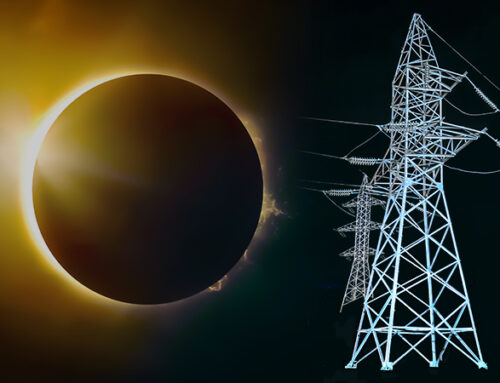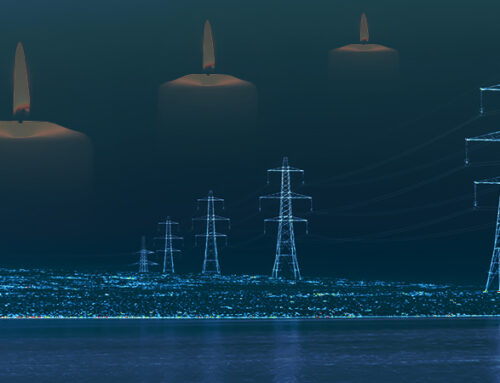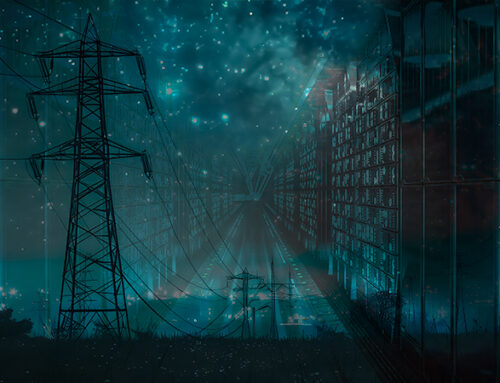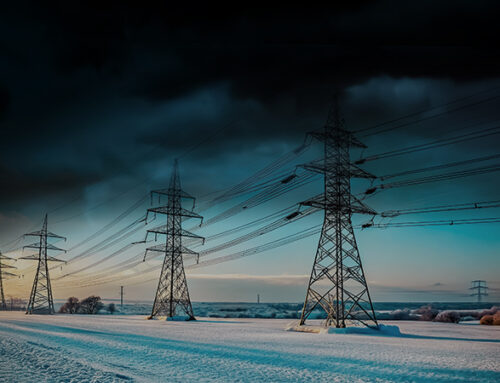Last week the legal challenge issued by Peak Gen and seven other companies against Ofgem’s decision last year to change the charging base for the demand residual component of transmission charges was heard at the Royal Court’s of Justice in London. I was in court for part of the two-and-a-half day hearing, which was defended by Ofgem and SSE (who had proposed the change adopted by Ofgem last year).
Not being in court for the entire hearing or having access to any of the reams of evidence meant some parts of proceedings were difficult to follow, however the crux of the Claimants’ complaint seems to be that Ofgem had failed to understand key aspects of the transmission charging regime when arriving at its decision; and that its decision unfairly discriminates against small embedded generation (“SEG”) particularly in relation to behind-the-meter-generation (“BTMG”).
The complexities of network charging
The full detail of TNUoS charging is set out in Part 2 of Section 14 of the Connection and Use of System Code (“CUSC”). Transmission costs are recovered from both generation and demand, however the amount that can be recovered from generators is capped under EU rules, meaning the majority of costs are recovered from suppliers.
“…charges should reflect the impact that Users of the transmission system at different locations would have on the Transmission Owner’s costs, if they were to increase or decrease their use of the respective systems…” – CUSC
The CUSC defines TNUoS as follows:
The Transmission Network Use of System (TNUoS) Tariff comprises two separate elements. Firstly, a locationally varying element derived from the DCLF ICRP transport model to reflect the costs of capital investment in, and the maintenance and operation of, a transmission system to provide bulk transport of power to and from different locations. Secondly, a non-locationally varying element related to the provision of residual revenue recovery. The combination of both these elements forms the TNUoS tariff.
The arguments around whether Ofgem had properly understood the network charging regime seemed to centre around the question of whether this second element represents sunk or avoided costs, or whether it contains some element of marginal costs, and are described in this paper by NERA Economic Consulting and Imperial College.
NERA argues that “the decomposition of the D-TNUoS charge into a supposedly cost-reflective locational component and a residual that only exists to recover “fixed/sunk” costs is entirely artificial” for two reasons:
- The locational element is only “cost-reflective” in that it emerges from a load flow modelling exercise that seeks to estimate the degree to which costs vary by location; and
- The level of the locational charge depends on regulatory decisions including the split between generation and demand (currently determined by EU regulations) that have not been justified with reference to cost reflectivity, and on the choice of the reference node within the load flow model which represents the geographic location of marginal increases in demand.
NERA presents analysis indicating that the level of the locational charge (and therefore by definition, the residual charge) varies with the choice of location of this reference node:
Ofgem addressed this point in its impact assessment, and again in court:
“…a number of respondents cited NERA analysis that noted the level of costs recovered from the locational charges could be increased significantly under different arrangements. We note that NERA also state that up to 90% of the costs of networks are fixed. Where marginal costs are below average costs, cost recovery charges will be needed to recover total costs.”
In fact, it emerged in court that the 90% figure did not come from the NERA report, but was communicated verbally to Ofgem by one of the report’s authors in a subsequent meeting. Ofgem’s Counsel noted that this figure had not been challenged by the Claimants until the final day of the hearing, despite it having been part of Ofgem’s position from the outset.
However, this is a complex question. In court there were several mentions of the demand locational charge being relative and netting to zero. It was unclear specifically what this meant (possibly because I didn’t hear all of the arguments), but both sides seemed to agree it was the case, although the model was apparently not designed to deliver that result. If this is correct, then that would seem to strengthen the Claimants’ arguments that the locational charge is not cost reflective meaning that some level of marginal costs is recovered through the residual.
A Cambridge University paper on electricity network design published in December supports this view in its description of the relationship between the components of the charge:
“The [load] TNUoS charges are now high largely to collect the revenue shortfall, and only a small part reflects locational signals. This residual charge has grown from about £10/kWyr in 2005/6 to about £50/kWyr in 2015/16, and is set to go on increasing,”
– David M Newbury, University of Cambridge
The question is to what degree does the residual mop up costs that should be collected through the locational charge, and whether Ofgem’s characterisation that the vast bulk of the costs recovered through the residual are fixed.
Equitable treatment of market participants
The Claimants also argued that Ofgem’s decision created “new distortions to competition”. The NERA report notes that the status quo prior to Ofgem’s decision ensured a common treatment for net demand reduction, regardless of source (demand response, behind-the-meter-generation, embedded generation, etc), and that by introducing gross charging for embedded generation, competition between alternative means of reducing net demand would be undermined.
The Claimants argued that Ofgem’s decision allows BTMG to continue to benefit from paying network costs on the basis of net demand while SEG no longer had access to this benefit. From the perspective of the transmission system, all distribution-connected generation looks the same, and therefore the charging regime should not distinguish between different types of embedded generation.
The Judge was at pains to understand precisely how different parties incur transmission costs, and the difference between the owner of SEG receiving a payment from a supplier in relation to saved transmission costs versus a customer with BTMG simply being charged less by their supplier for any supply delivered from the grid rather than their own on-site generation (or third party generation provided via private wires). He also made the point that, absent export to the distribution network, BTMG does not use any shared electricity network whereas SEG uses the distribution network.
Ofgem and SSE argued that these are highly complex regulatory matters, and the requirement to consider every possible impact on every party before making any changes to charging regimes would be unduly onerous. The point was also made that measurement could be a challenge since BTMG could be entirely outside any existing metering arrangements. It may be that the Judge had sympathy with this argument since he at one point commented that such a process could become “unlimited”. Of course, sympathy does not necessarily translate into agreement from a legal perspective.
The future of “triad”- based charging
So-called triads – the three half-hourly periods of highest winter peak demand – have been used to determine the recovery of transmission costs since the 1950s, but consumers are becoming increasingly sophisticated at triad avoidance through shifting their consumption patterns to avoid the periods they expect to see demand peaking. This is leading to greater uncertainty in the timing of the evening peak and making demand patterns in general more difficult to predict.
The 2017/18 triad season was unusual – this was the first time that all three dates fell on a Monday and the dates were also shifted towards the end of the season due to the “Beast from the East” late cold snap – this was the first season with two triad dates in February. The amount of peak demand was also lower than usual, with the level on all three dates being well below 50 GW and the difference between the highest and lowest demand levels continuing its falling trend.
The late cold spell also pushed the time of the triads back with peak demand on 26 February at 18:30 – usually triads occur at either 17:30 or 18:00, however the cold snap being so late in the season meant it happened when the days had started to become longer, delaying the time when lighting was needed.

Across the whole of the triad season, the timings of the daily peaks was more spread out than in the past, with many more falling in settlement period 34 (16:30-17:00). This may well be due to triad avoidance strategies. The ability of consumers to reduce demand tends to be time limited – heating or cooling can be interrupted to avoid a particular settlement period because in most cases the thermal capacity of structures will mean that temperatures change slowly. Batteries can also be used to discharge onto the grid during peak periods, another relatively short duration activity since most commercial batteries can only run for around half an hour before needing to re-charge.
As more users seek to manage their loads to avoid potential triad periods, peaks are extending and becoming flatter – this is leading to speculation, that the triad mechanism of cost recovery may be amended or even replaced. Ofgem is concerned that network costs are starting to fall disproportionally on consumers who are unable to avoid them and are least able to afford them, particularly domestic consumers. In the context of rising domestic energy bills, this is a sensitive topic, and is among the issues being considered by Ofgem in its Targeted Charging Review of transmission charges.
Expected changes to rules for unabated generators shelved
In late April The Energyst reported that the Environment Agency (“EA”) confirmed it had dropped plans that would have prevented unabated generators from participating in triad avoidance.
Under the Medium Combustion Plant Directive (“MCPD”), generators that take on new balancing services agreements or Capacity Market contracts, must comply with strict NOx emissions limits by 1 January 2019. These generators are classified as “Tranche B” generators, while those that do not take on new agreements are “Tranche A” generators and have until 2025 or 2030 to comply.
Previously, the EA had indicated that triad avoidance would be treated as a balancing service, meaning any generators participating in triad avoidance would need to comply with the new emissions regulations, including on-site back-up generators. While abatement can be fitted to generators, in many cases the cost could outweigh any savings achieved through reducing net consumption during the triads.
The EA was lobbied by aggregators and others who argues that since back-up generators need to be tested, this may as well be done at times that help to reduce peak demand on the grid – the testing would need to take place regardless generating exactly the same level of emissions, but without the benefit to the system of reducing peak demand.
To know whether these arguments genuinely hold up, it would be necessary to analyse the utilisation levels of back-up generation, which is difficult due to the lack of metering as described above – if back-up generators are only run a handful of times a year for testing then allowing them to participate in triad avoidance would seem reasonable.
If, on the other hand, these generators are running more often, then they should be subject to emissions regulation. In many cases any strategy to use on-site generation to optimise energy use could also involve providing DSR services to the grid, in which case the generator would be classified as a Tranche B generator, however, those generators that are only used for demand optimisation and do not provide any services externally would not be required to comply with the emissions regulations until 2025 or 2030. Whether the EA’s decision is the right one really depends on how large this category is, and whether the unabated backup generation is being used to any significant degree.
What next for transmission charging?
In the concluding moments of last week’s hearing, Counsel for Ofgem informed the Court that National Grid had a need, if possible, to have a resolution by early July in order to prepare its billing systems for the 2018/19. The Judge noted this but said he could not guarantee to have an answer by then, so it could be some months before the outcome of the hearing is known.
I’m not a lawyer, so cannot meaningfully comment on how the Judge will evaluate these matters, but as a lay person, I found the discrimination argument quite difficult in that forcing Ofgem to be fully non-discriminatory would impose constraints that would be extremely hard to manage in practice. The idea that Ofgem could not authorise changes to network charging without a full impact analysis that incorporated currently un-metered generation would create significant barriers to effective and responsive regulation. I do not think it would be in the best interests of the industry as a whole, and even potentially the Claimants, since this would embed significant inertia into regulatory processes making it harder for changes to be made to accommodate new business models.
That leaves the question of whether Ofgem properly understood the charging regime it was changing. For me, this comes down to the extent to which the Judge was persuaded that Ofgem had not fully understood the nature of and relationship between the locational and residual elements of the transmission charges. Energy market regulation is highly complex, and I wonder how happy the Judge would be to find that the regulator was in effect incompetent in its decision-making, when he himself is not an energy expert.
If these were questions that could be easily summarised in a short blog post, then there would have been no need for a judicial review, so I hesitate to make any predictions on this point, particularly since I wasn’t in court for the entire hearing and did not have access to all of the evidence presented to the Judge. What I did think was clear though, is that no-one, including Ofgem, is satisfied with the way in which transmission charges are allocated, and Ofgem has launched a Targeted Charging Review to explore these issues further. So more changes can be expected regardless of the outcome of this court case.








Leave A Comment